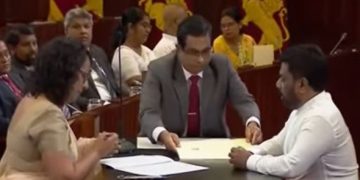By Meera Srinivasan/The Hindu
Colombo, July 21: “Why so negative?” Journalists are often asked this question by online bullies or others with low tolerance to a reality that isn’t theirs. Stories of distress and deprivation apparently spoil their day. Agreed, reading about someone’s misery is hardly reassuring. And if you’re a politician holding power, and tasked with ensuring people’s well-being, it can be a nuisance to have stories that challenge the good news narrative.
Overzealous sidekicks are quick to launch social media attacks on journalists who “project a negative image” of their land or leader. They attribute motives, deny the reports, or question the reporter’s sources. All the same, they don’t hate all stories. News reports of their leaders’ rhetoric-heavy statements with flattering pictures, the government’s plans and proposals, or its claim of rapid economic growth are all welcomed wholeheartedly as long as they don’t point to contradictions, scrutinise official data, or highlight gaps in the implementation of a programme. Those are annoying details, spoiling the flow and spirit of their story. Context and history are equally detested.
In reality, reporters do not pick stories based on whether they are “positive” or “negative”. We go by whether a story is newsworthy. And that means thinking about why it is important to report that story at that point in time, what the peg should be, and how to go about it.
We certainly enjoy telling stories of hope and courage. Reporting on them can be illuminating and uplifting. While on the school education beat many years ago, I would come across stories of poor students topping a big examination every year. Readers would write back to say how inspired they were to learn about the student’s impressive achievement, and at times even offer support for her higher education. My colleagues tell inspiring stories of persons with disabilities shining in their fields, socially spirited individuals who made a difference to their communities, innovators, entrepreneurs, change-makers. My assignment in Sri Lanka has given me many opportunities to tell such stories of courage, compassion, and resilience, especially from the former war zone.
Individual stories are undoubtedly powerful. At the same time, we confront more questions while telling them: Why are some communities in poverty for generations? Is our urban infrastructure and public transport system accessible to persons with disabilities? If the economy is growing so rapidly and business enterprises are thriving, why are so many jobless? Why must a village depend on philanthropy? Why do the demands of people who have endured brutality and loss go unheard? Historic injustices and structural inequalities become evident.
Around the time the pandemic hit the world, I interviewed senior British journalist Gary Younge, known for his exceptional coverage of race and class. Reflecting on his own reporting career, he said: “There is this phrase in journalism, ‘When a dog bites a man, that is not a story; when a man bites a dog, that’s a story’. And I understand that. But sometimes you have to ask yourself: who owns these dogs, and why do they keep biting people, why do the same people keep getting bitten?” These questions will not lead us to “feel good” stories, but are bound to unnerve those wielding power, and those perpetuating the violence.
A conflict situation is a particularly good barometer of the state’s willingness to take hard questions and criticism. The already efficient propaganda machinery works overtime to project peace, calm, and stability, when in reality, those living in the area are on the edge. Despite the best attempts of the state to underplay a crisis, information eventually comes out. Those expecting us to tell only good news stories are basically telling us, “Don’t do your job”. If reading about gruesome violence faced by some people in our society or the state’s abject failure to contain it bursts your little bubble of contentment, we are terribly sorry. To tell you “all is well” every morning, there are sparkly WhatsApp forwards. But for a reality check, there’s only journalism.
































































